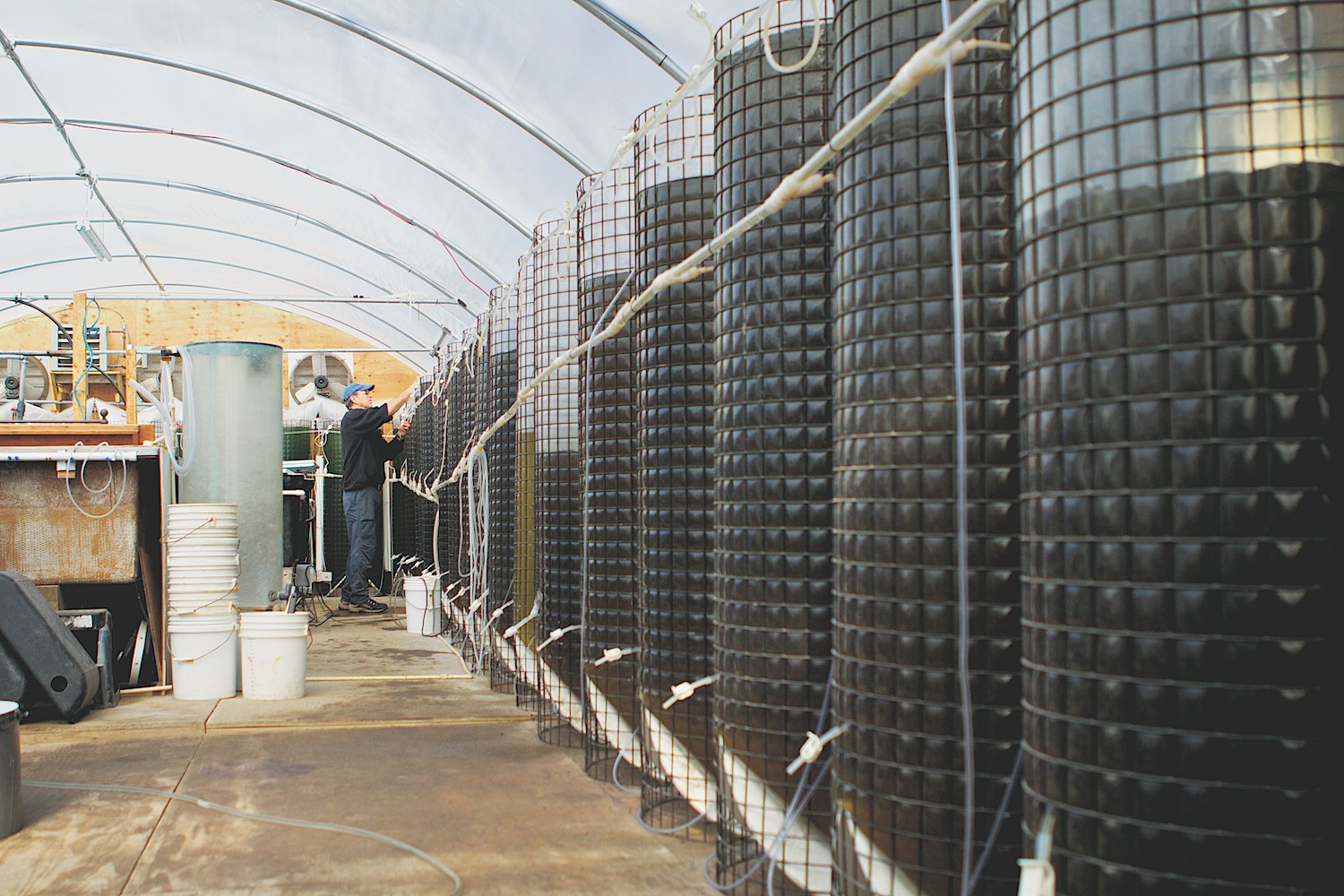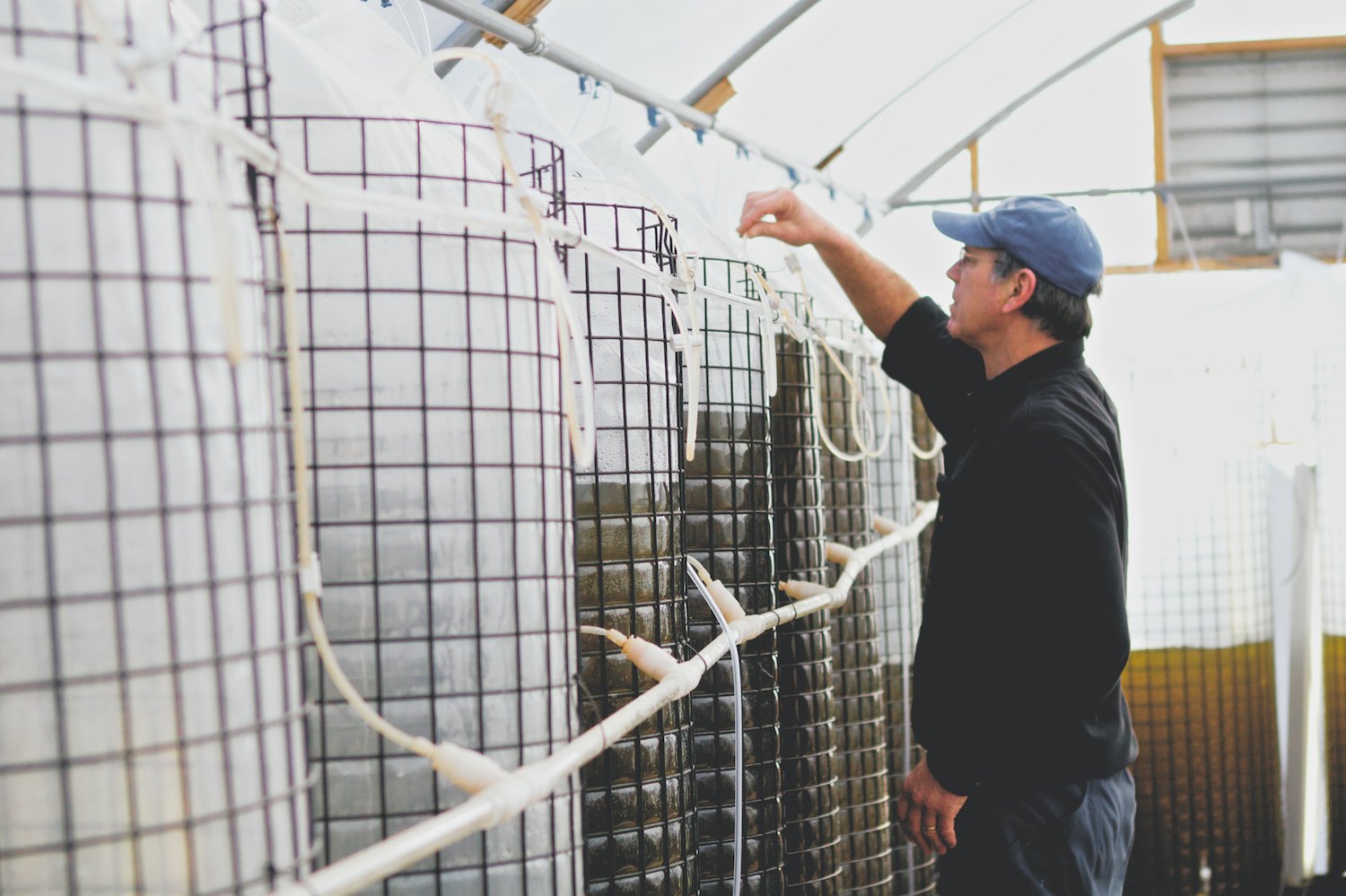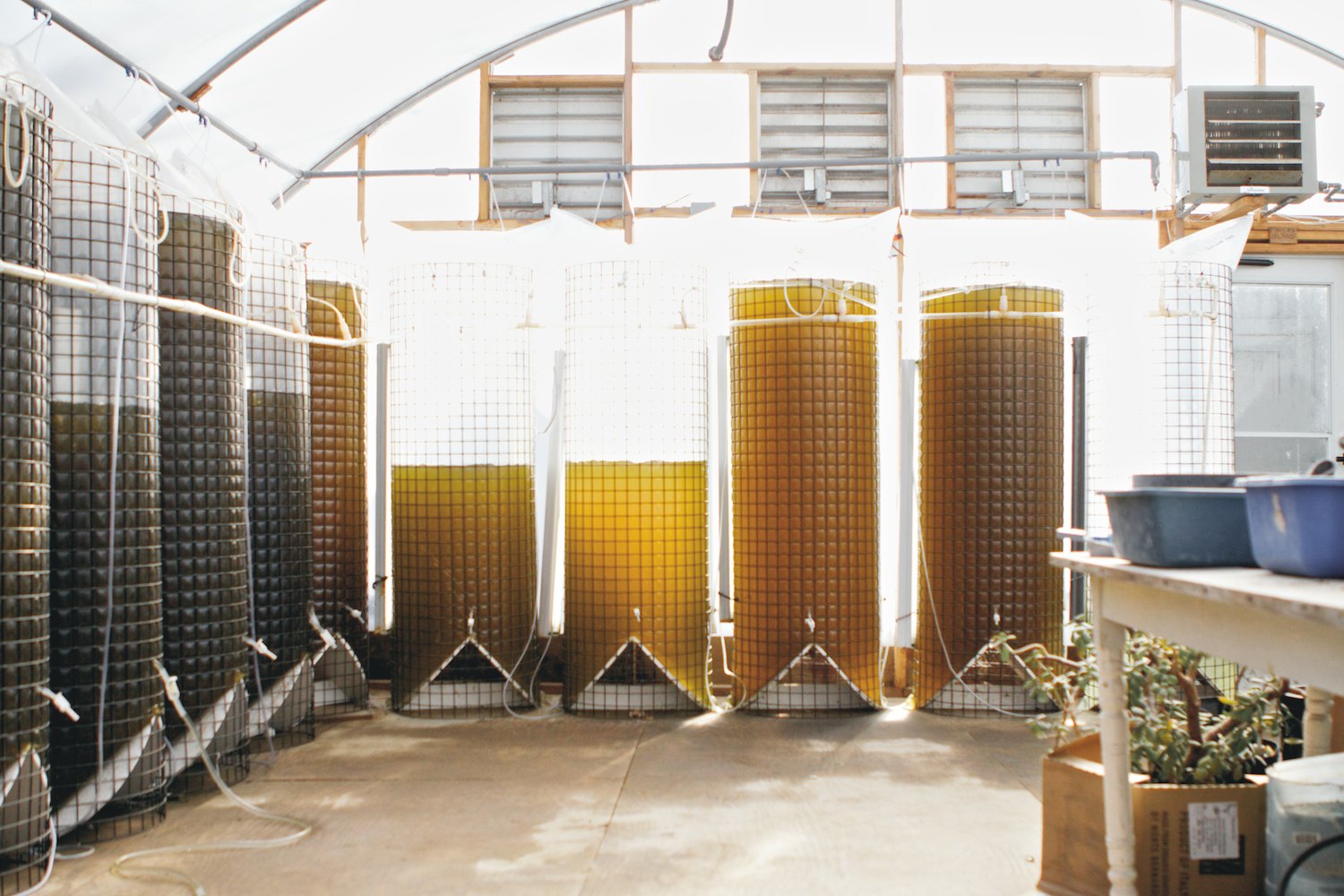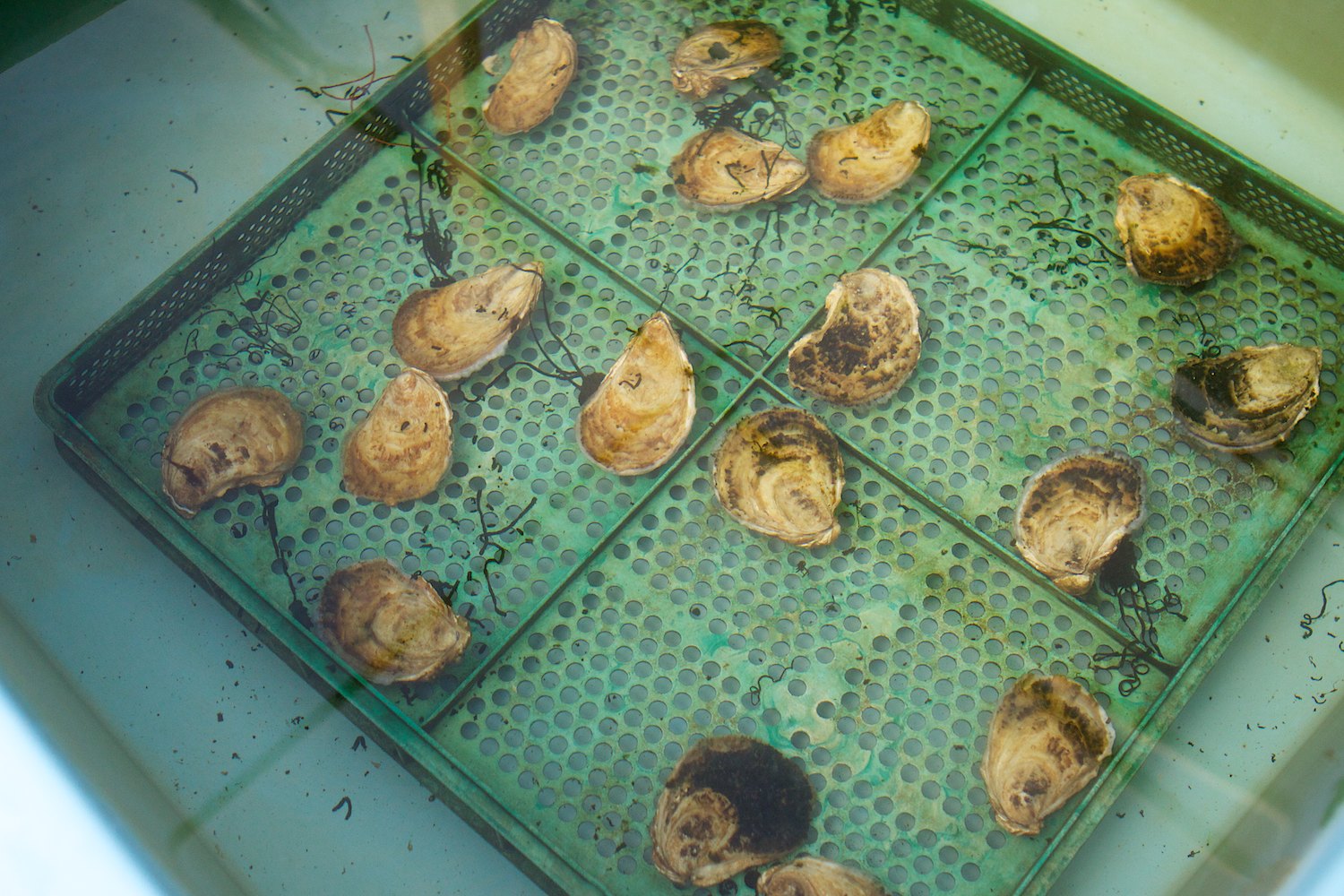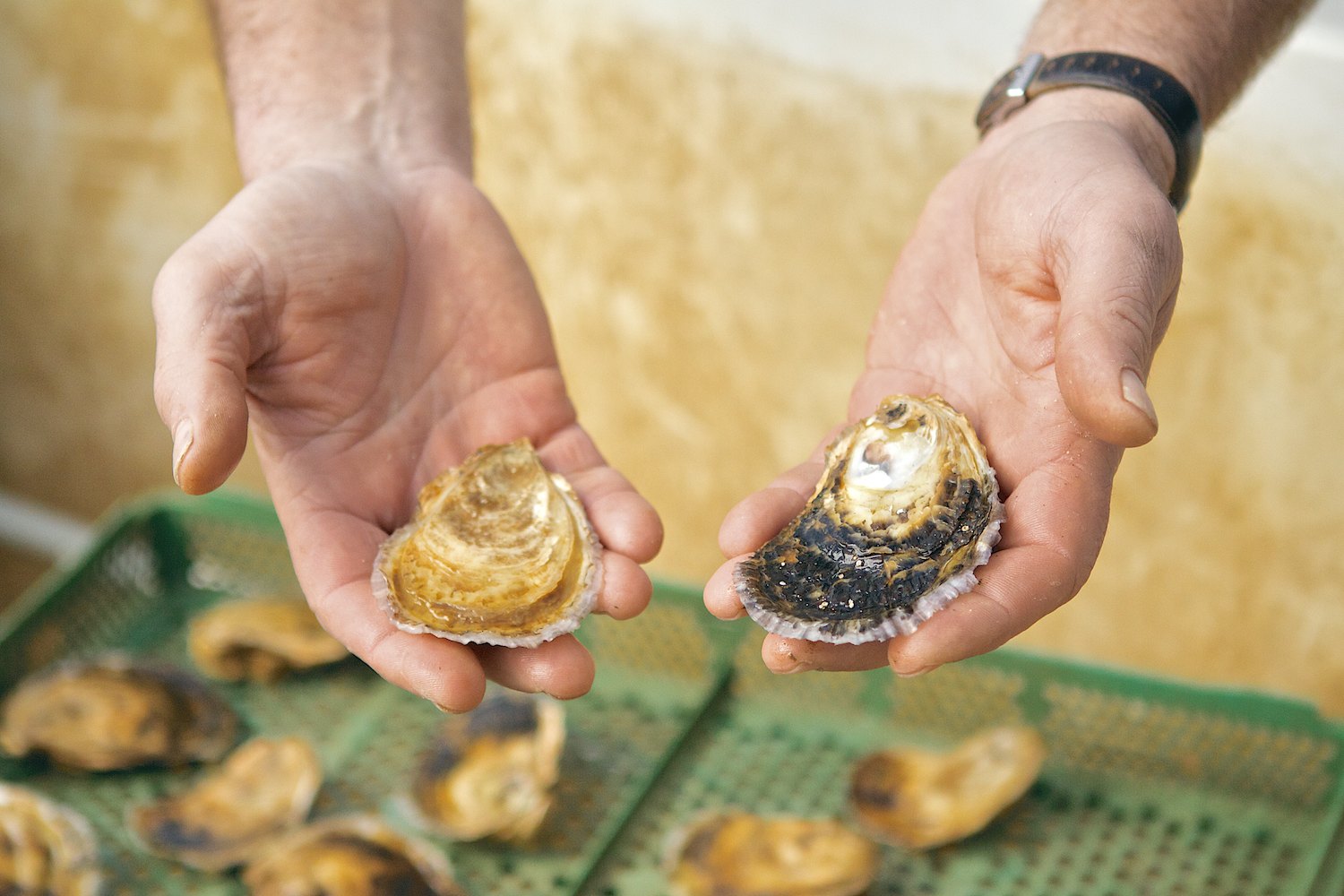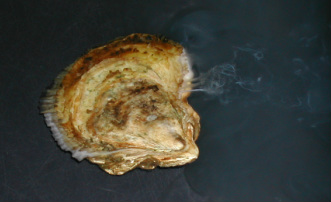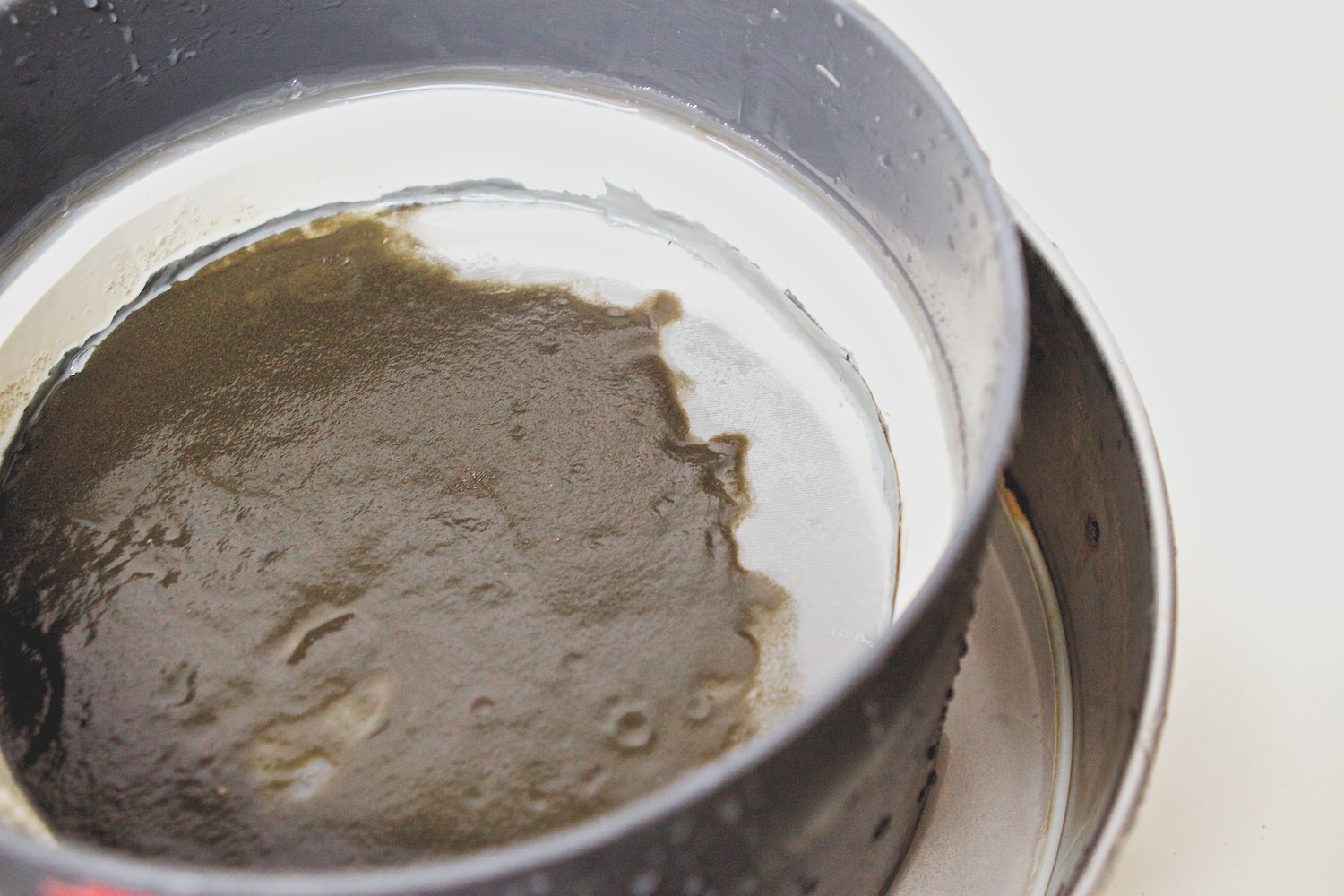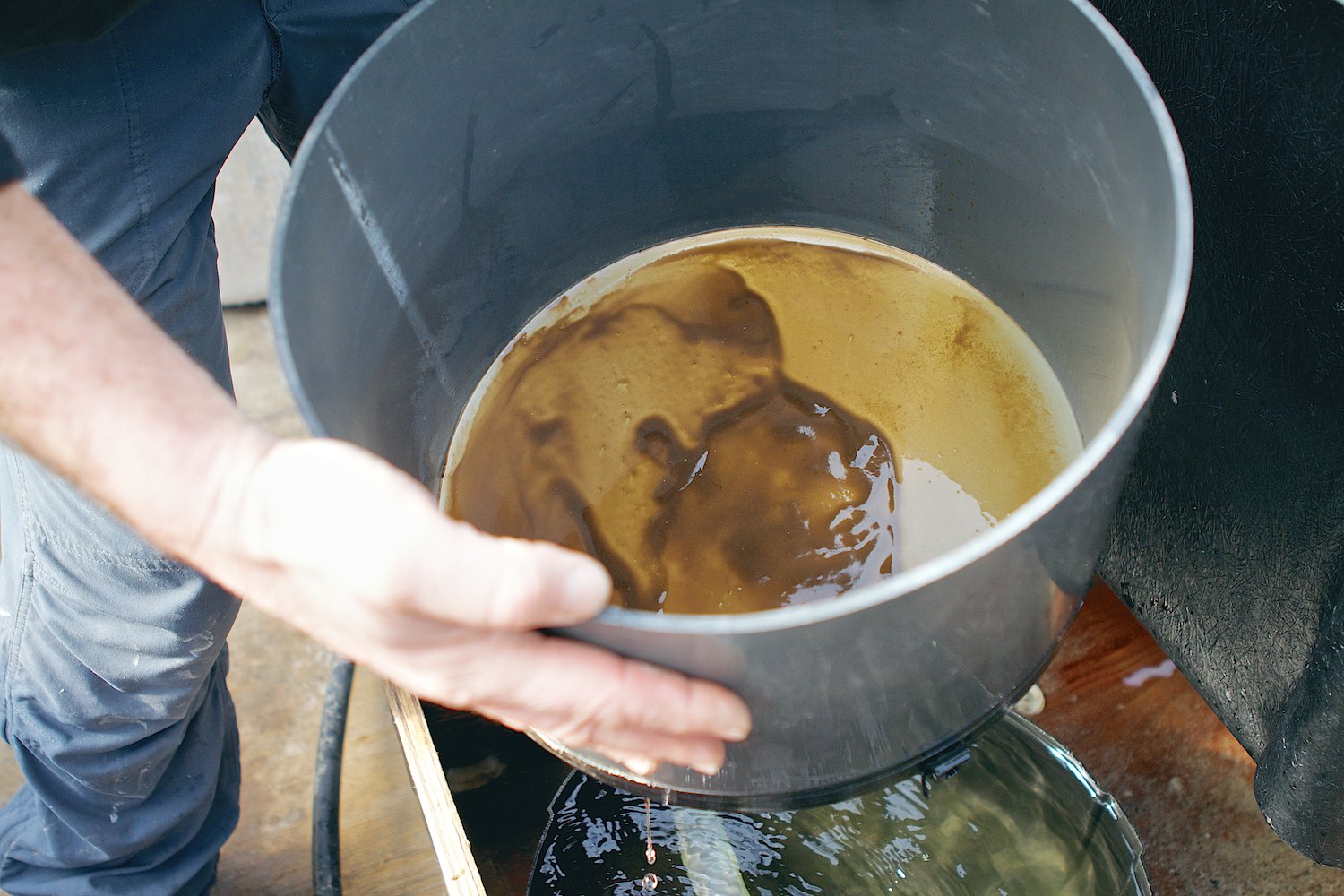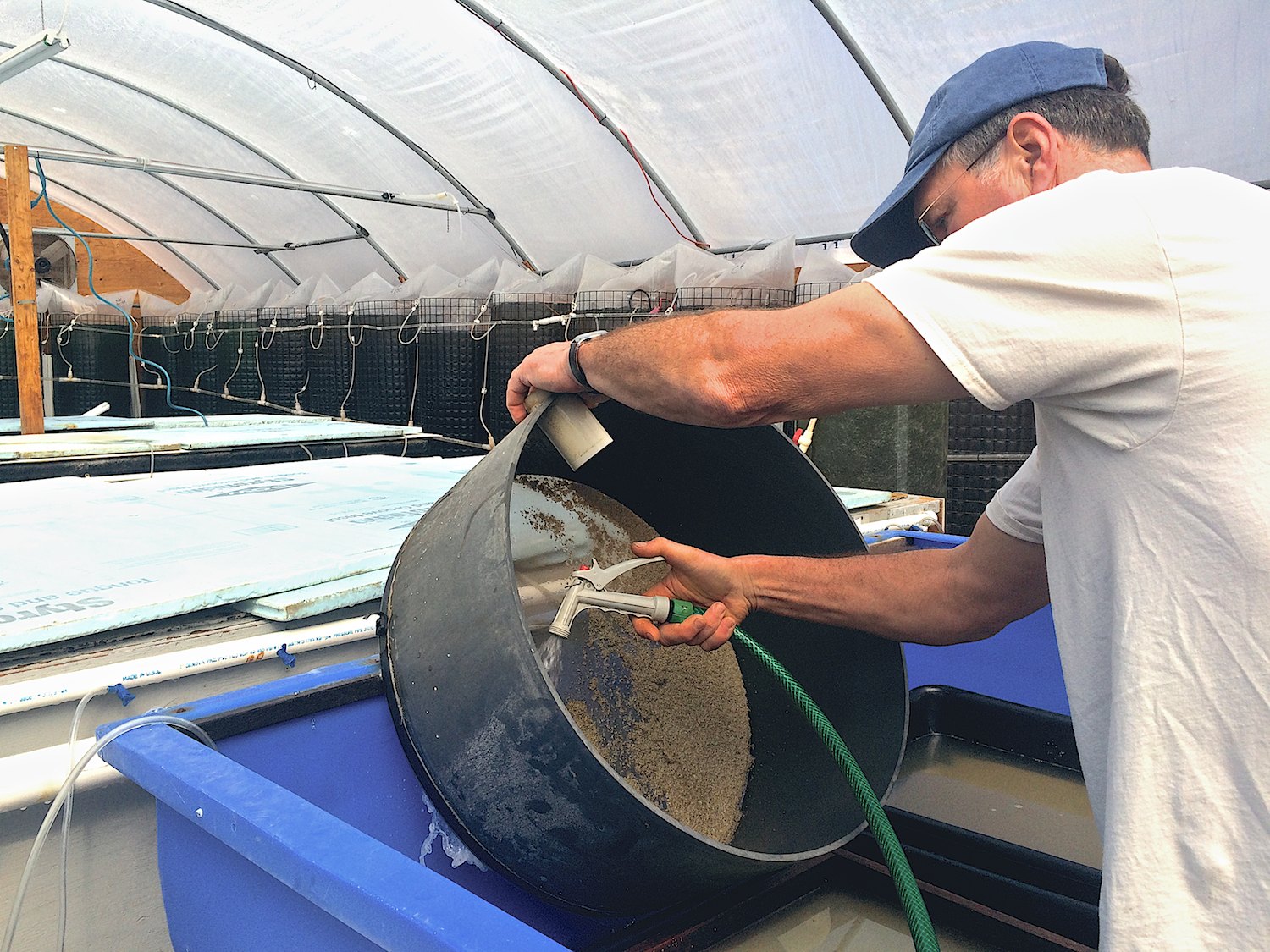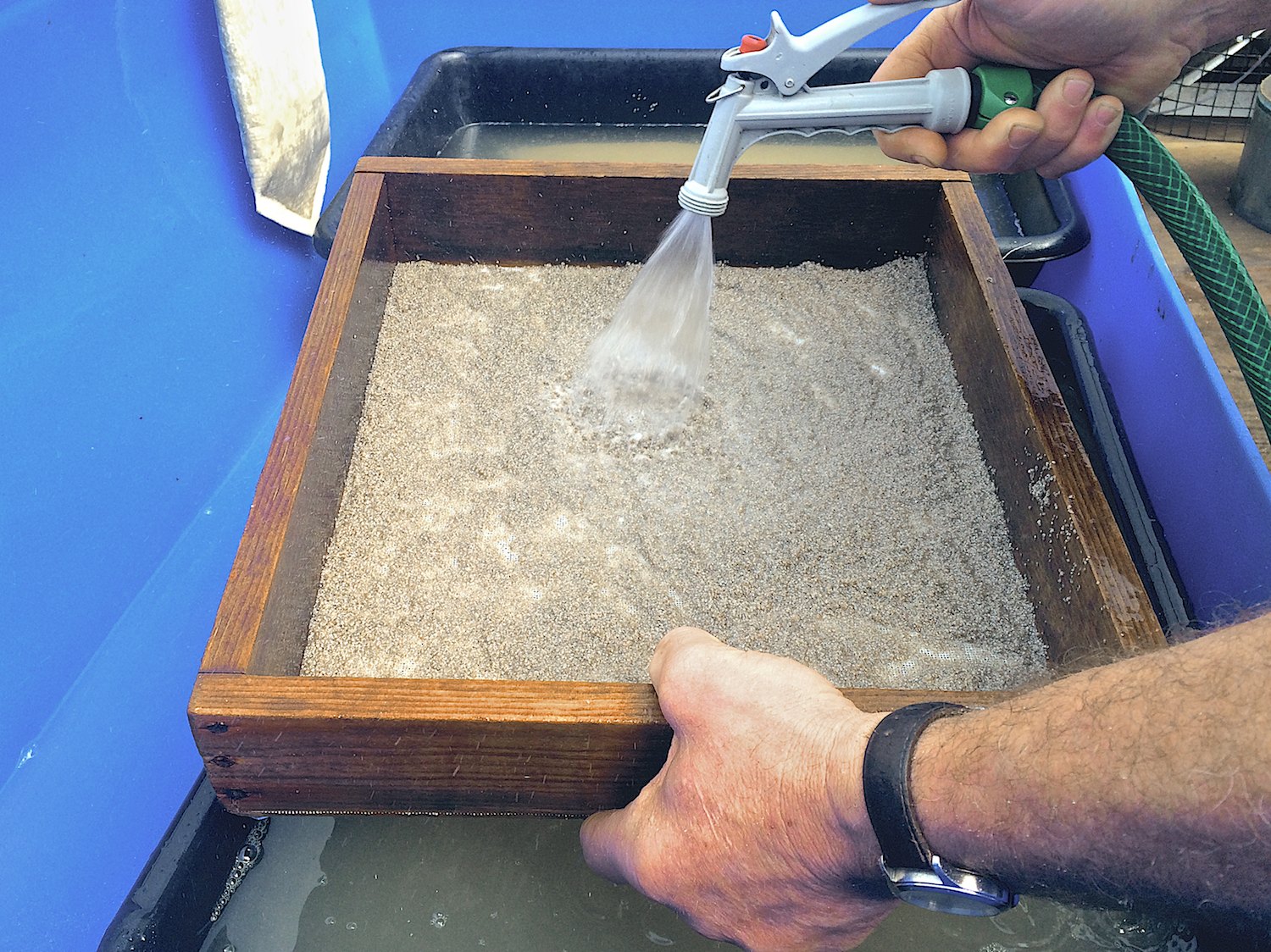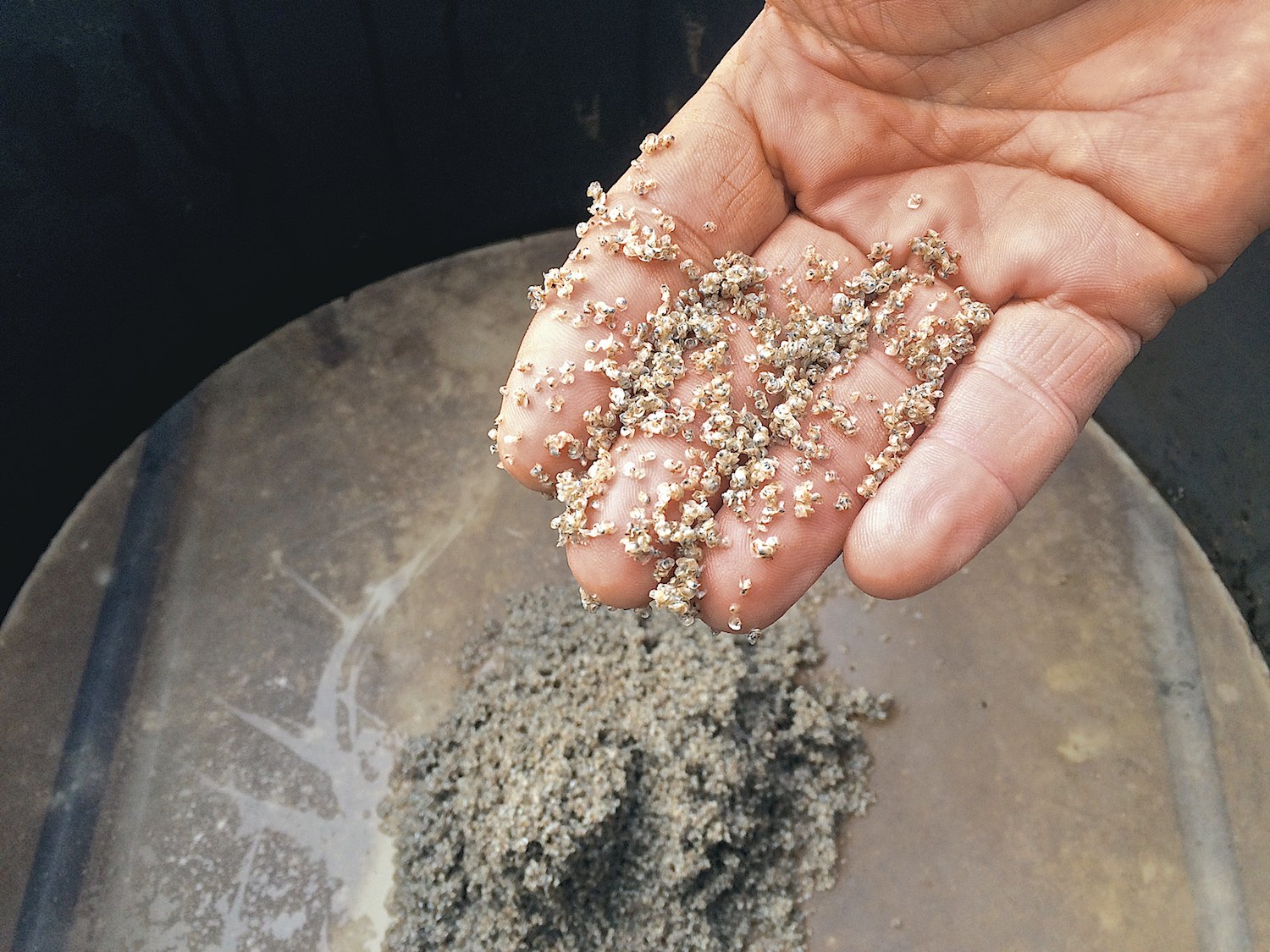Oyster farming can be broken down to three basic phases. The first step, which only select farms do, occurs in the oyster hatchery.
A Tale of Two Cultures
Our hatchery consists of two distinct culture systems. In the first, we grow specific species of phytoplankton. Oysters will feed on whatever kind of phytoplankton that happens to be in the water in the wild. In our laboratory, we are quite a bit more selective. We feed our culture of oysters, from microscopic larvae to small juveniles, a special mix of phytoplankton. This nutritious diet helps ensure that our oysters get the best start they can in life.
In the second system, we spawn millions of baby oysters. We produce up to 40 million oyster seed a year.
Selecting the Right Parents for the Job
Initially, we bring our parent stock into the hatchery during January. Our parent stock is the result of over a dozen generations of selection for disease resistance, fast growth, and perfect shape.
Growth rates and therefore yields to maturity of our genetic line have nearly doubled in the last 12 years.
Getting into the Mood
Adults hibernate in the winter and therefore must be conditioned to spawn. We hold the adults for three to four weeks in warm water and feed them large amounts of food. Our objective is to simulate the conditions the oysters would experience in June when their eggs and sperm would ripen in the wild. Once conditioned, oysters are spawned by being stimulated with sharp increases in water temperature. Each female may emit over fifty million eggs. The microscopic eggs are collected and fertilized and then moved to our larval rearing tanks.
Screening for Success
Each day we drain the tanks, collecting the larvae on ultra fine mesh screens. The larvae (initially 20 million in a 100 gallon tank) are inspected, counted and returned to the tanks that contain fresh seawater and food. After two to three weeks, most of the larvae, which are free-swimming, have reached a size of 300 microns (eyed larvae) and are ready to go through metamorphosis.
Setting Down as Spat
The larvae are then moved to downwellers; short lengths of two foot diameter fiberglass pipe with mesh screens on the bottom. We grind oyster shell into a fine cultch and spread it on the screens. The oysters cement themselves to the fine pieces of shell and are no longer free swimming larvae but miniature adults. The set oysters are grown for another few weeks in the hatchery and attached greenhouse until they are about 1/16 of an inch.
After the oysters are big enough to leave the hatchery, it is no longer necessary to feed them. All of their nourishment comes from naturally occurring phytoplankton.


